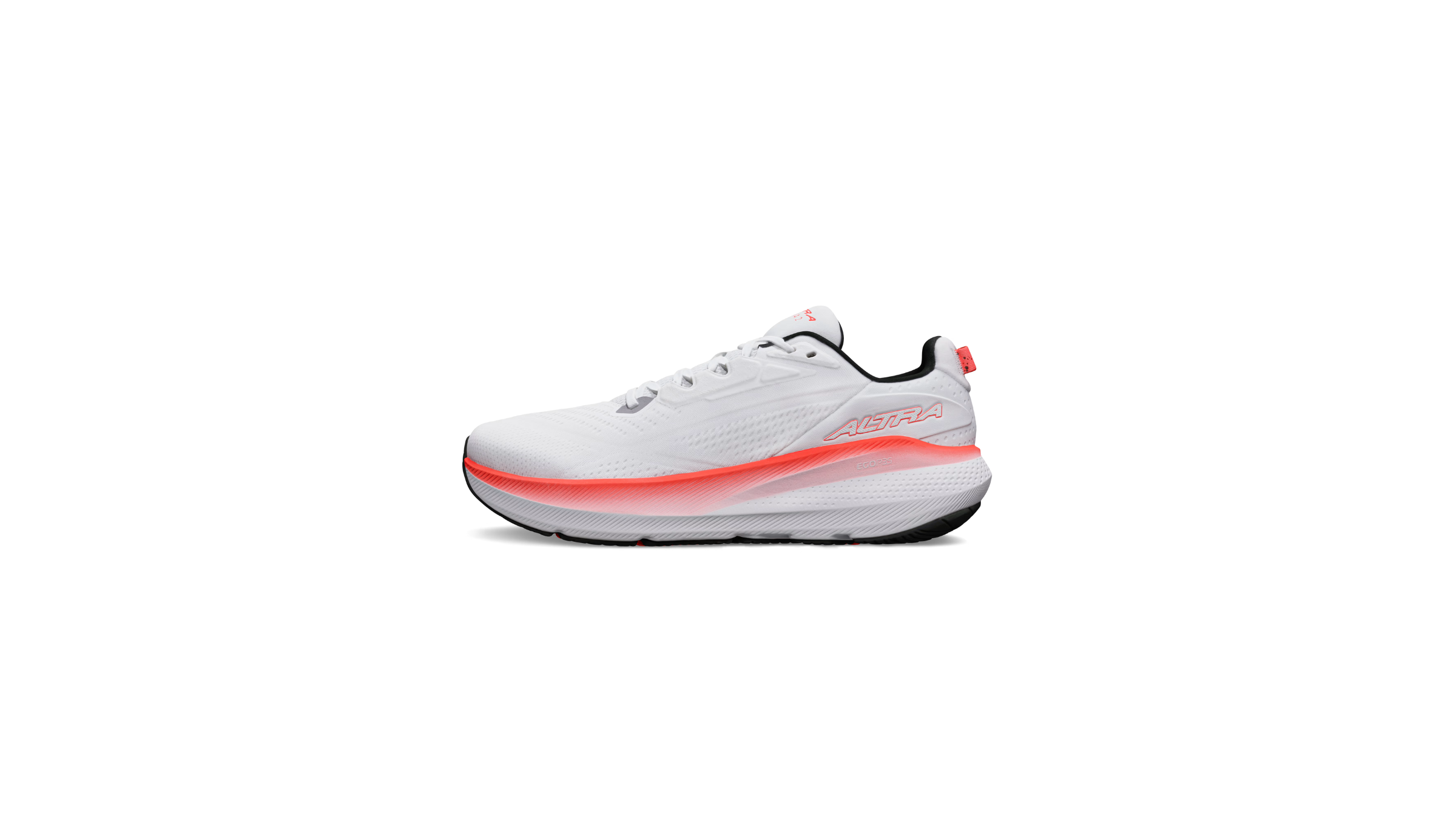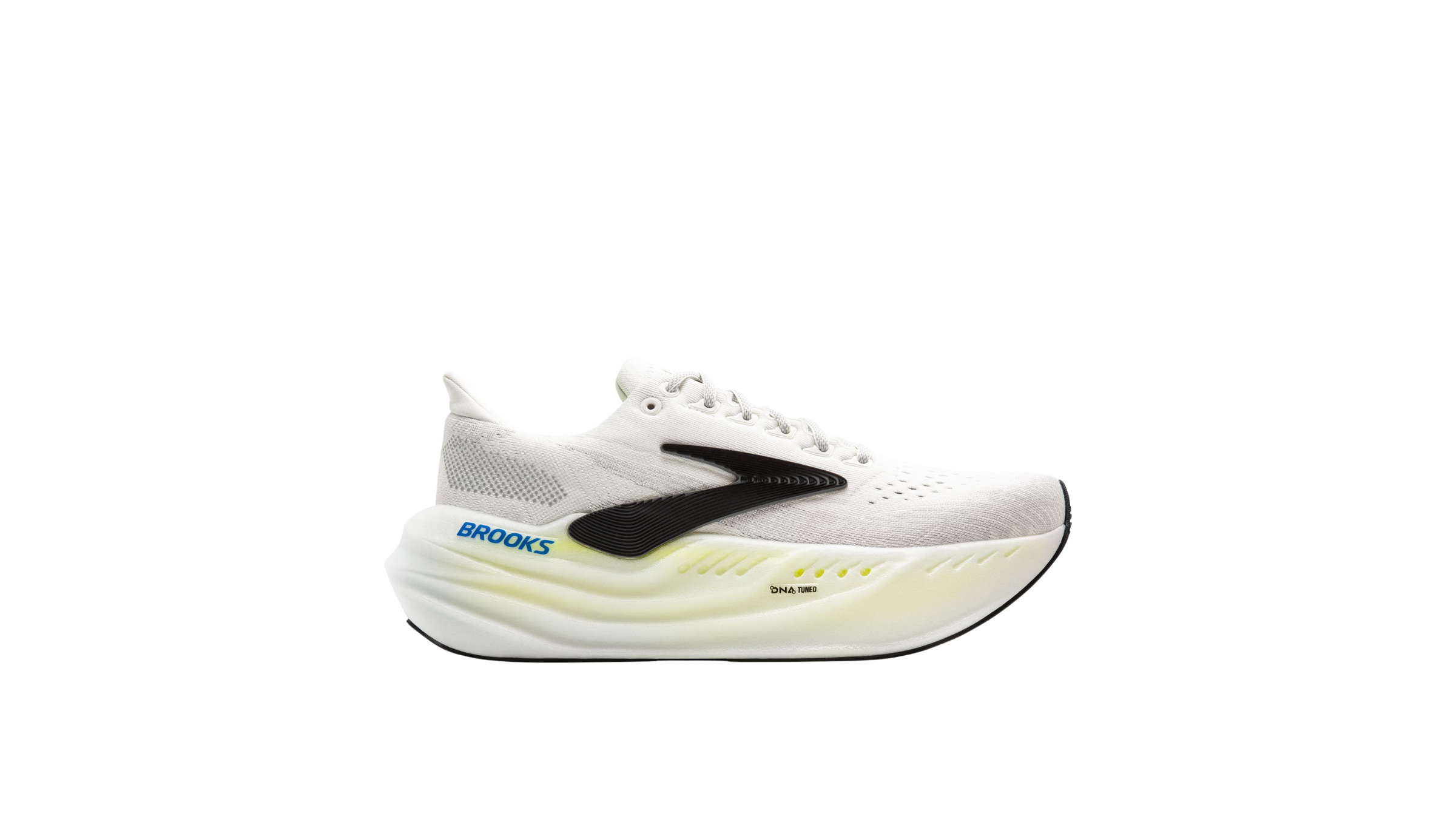If you buy through our links, we may earn an affiliate commission. This supports our mission to get more people active and outside.Learn about Outside Online's affiliate link policy
Max-Cushioned Running Shoes are Trending, but Should You Rise to the Occasion?

Sure, max-cushioned running shoes look plush—but here's what to know before actually running in them (Photo: Kristen Geil, Canva)
Running shoes are designed to meet specific needs. Lightweight shoes optimize going fast, stability shoes provide extra support for those who need it, trail running shoes are a prerequisite for veering off the beaten path. But that doesn’t mean the running shoe industry is immune to the influence of trends. And in the case of how max-cushioned running shoes went from bombing switchbacks in the French Alps to 40-millimeter midsoles finding their way onto the feet of everybody from New York City run clubs to the check-out line at Whole Foods, it’s a little bit of both.
Why Are Max-Cushioned Running Shoes Suddenly Everywhere?
Max-cushioned running shoes as we know them today were introduced to the market about 15 years ago, when a fledgling French brand called HOKA (perhaps you’ve heard of them) launched a shockingly chunky trail shoe to serve a very specific purpose. “The problem it solved was, how can you run down a mountain as fast as you can, as smoothly as you can, with the least amount of impact possible?” says Colin Ingram, VP of Global Product at HOKA.
In the years following the launch of the Mafate, HOKA continued to iterate on its flagship off-road shoe (the recently launched Mafate 5 is our favorite yet), while also introducing comparatively cushy styles for road running. But it wasn’t until the late 2010s, following the market-moving rise of the “dad shoe,” which normalized chunky athletic footwear in popular culture, that max-cushioned shoes started to pick up real momentum.
“I think the main reason that max-cushioned running shoes have begun trending is really the fashion side of the conversation,” says Milica McDowell, associate vice president of education at U.S. Physical Therapy. “Go to an airport, go to a sporting event; you’re going to see max-cushioned running shoes on a large percentage of the population wearing them as a casual shoe. People are just clomping around in them.”
“At the end of the day, the consumer rules the industry and the direction the industry goes in,” says Nikhil Jain, director of footwear product line management and Blue Line Lab at Brooks. “And then, you know, brands see that and they want a piece of that pie.”
But the triumph of the tall trainer has also been made possible in part by a new generation of multitasking midsoles, engineered using innovative foam technologies that simply didn’t exist just a few years ago.
Prior to the 2010s, shoes had been either cushioned or responsive, either light and low or thick, heavy, and protective. New foams have enabled the creation of shoes that are simultaneously soft, fast, tall, and featherweight, bridging previous shoe categories—maximalist not only in form, but also function.
“You can now have a maximal shoe that protects you from the pounding and all that, but also give you feedback and be responsive,” Ingram says.
“Foams have graduated and gotten so much better in terms of what they are doing for consumers,” says Jain. “These new foams—they not only have that really nice displacement, but you get that bounce back. You’re getting back more in return. And it’s lighter. That was not possible until we started getting these supercritical fluid foaming processes. All of that technology has not only allowed this combination of performance, but it’s also now started amplifying it.”
Meanwhile, athletic brands have been running with the trend, literally, with pretty much every major running shoe label launching entries into the increasingly crowded max-cushioned category—each new model seeming to boast a taller stack height than the last.
Make Max-Cushioned Shoes a Part of Your Running Rotation
Overall, Dr. McDowell encourages people to think of max-cushioned running shoes as specialty footwear, similar to a hiking boot or track spike. “I think this is where the messaging has gotten a little bit confused, with people thinking max-cushioned shoes should be the be all and end all, all the time, when really they were developed to be a specific tool for a specific job,” she says. “From a medical professional standpoint, from a biomechanical standpoint, it should be a selected tool for certain circumstances, not for the entirety of all of your activities.”
One reason why you may not want to rely too heavily on max-cushioned running shoes is that they buffer the communication between your foot and the ground. A certified exercise physiologist, Dr. McDowell is a big proponent of minimalist running shoes and points to research showing that less foam equals stronger and more stable feet—and vice-versa. “We want that reaction from the foot hitting the ground, and the ground hitting the foot, to strengthen our bones, to stimulate muscle, to strengthen the feet, and to help us from a postural and gait efficiency standpoint,” she says.
“You want to have the right tool for the right day. And the whole idea, even for a brand like HOKA, is having a line of products to allow you to tune that experience,” says Ingram. To be fair, the brand that started it all has come a long way since 2009, and today HOKA offers a deep repertoire of options that span the spectrum of stack heights. For every majestic Mafate X towering above the trail, there’s a snappy Torrent 4 that’ll let you feel every rock, root, and random piece of debris you encounter.
Hoka Mafate X

Hoka Torrent 4

“If we’re doing our jobs right, you’re making sure you have that ability to adjust, to maybe go slightly down in stack heights and get a little bit closer to the ground, maybe change foams and have that little bit more feedback, maybe go with a plate for a little bit more resilience and some propulsion,” Ingram says. “Those are all factors in the way we build our line and that allow you to fine-tune the experience you need. Even for somebody like me, I have three running shoes that I use in a given week, just because of the sensation and the experience that they give me.”
Max-Cushioned Shoes Are At Their Best In Specific Situations
While not necessarily the best shoe for every run, there are a handful of scenarios where max-cushioned running shoes truly shine. “They’re really for anyone who’s looking for the shoe to do some of the work for them,” Dr. McDowell says. “And so it’s best to select them if you are in a situation where, for a short term or a medium term, you feel like you want the shoe to do some of the work. Maybe you’re new to running and it’s hard for you, or you’re coming back after a long hiatus. Maybe you’re pregnant, or you’ve gained weight. Maybe you’ve had surgery, or you’re returning from injury.”
Altra FWD VIA 2

In any of the above situations, think of a max-cushioned running shoe as a more comfortable, and more safe, entry point into running. “As a physical therapist with 20-plus years of experience, I don’t see people coming to the office with bone injuries, stress fractures, plantar fasciopathy, or heel pain when they start in a more cushioned shoe, but I do see the opposite,” Dr. McDowell says. “If someone decides to get back into running, or they’re totally new to it, and they start in a more minimal shoe, that’s where we actually see issues. It’s smarter to go from more cushion to less, rather than less to more.”
Brooks Glycerin Max

That said, if you’re already dealing with a persistent injury or nagging foot pain, you’re probably going to be better off making an appointment with a podiatrist rather than trading a stack of cash for a stacked midsole, Dr. McDowell says. “If you’re struggling with a persistent inflammatory condition, like Achilles tendonitis, plantar fasciopathy, or heel pain, that’s really your body telling you that something’s not right and you should see a medical professional and get it cleared up.”
But They’re Also Great For Recovery Days and Long-Distance Runs
Fortunately, you don’t need to suffer an injury (or an unsightly gap in your Strava activity feed) to enjoy the sensation of soaring above the sidewalk in a pair of sky-high trainers. Recovery days are a perfect opportunity to step onto a buttery-soft midsole. As are long-distance runs. “Beginners, people who are getting back into running, and things like that—those people do great in maximal shoes,” says Ingram, “but at the same time, elite runners who are throwing down hundreds of miles on the regular are able to jump into them, and they become a tool to recover better as well.”
Adidas EVO SL Running Shoe

For the average person, “a max-cushioned shoe’s best use cases are recovery and LSD (long slow distance) runs,” Dr. McDowell says. “If you’re a little bit flared up, or if you’ve done a lot of volume and need a day where you’re feeling less of the impact of the ground, or even if you’re used to running on a softer surface and you’re going on a work trip and will have to run on pavement or sidewalk, it’s a great way to mitigate and dampen the impact from the surface onto your foot.”
Nike Vomero Plus
